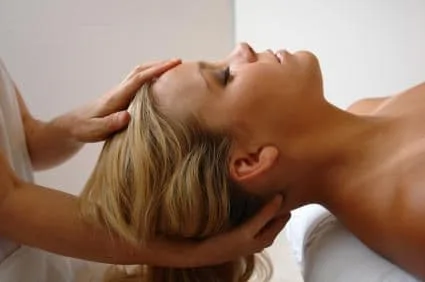Vestibular Rehabilitation

What is Vestibular Rehabilitation?
Vestibular rehabilitation is an exercise approach used to manage persistent dizziness and imbalance in patients with vestibular dysfunction. It is useful in decreasing fall risk, improving postural stability, and decreasing symptoms in patients with vestibular deficits.
What is a physical therapist's role in vestibular rehabilitation?
At Palm Beach Aquatics and Physical Therapy the physical therapist will evaluate you to determine what the impairment is and will then design a program of exercises and activities with an emphasis on proper gait and balance plus decreasing dizziness symptoms. Treatment for vestibular rehabilitation may include therapeutic exercise, manual therapy, neuromuscular reeducation, and gait training.
What causes vestibular dysfunction?
Vestibular dysfunction can be caused by a variety of influences, including viral infections of the vestibular nerve and bacterial infection of the middle ear. Conditions that alter the volume of inner ear fluids or middle ear pressure also result in vestibular dysfunction.
Other causes may include head trauma (onset of vestibular dysfunction may be immediate or after a delay of days, weeks, or months) and the degeneration of hair cells in the inner ear during the aging process.
Benign Paroxysmal Positional Vetigo (BPPV) is a common peripheral vestibular disorder. While most cases of BPPV are idiopathic, 17% of BPPV cases are the result of head trauma, 15% are the result of vestibular neuritis. The onset of vestibular neuritis is typically preceded by a viral or gastrointestinal infection(note that physical therapist do not treat the inflammatory process of vestibular neuritis, which is a medical diagnosis, they do treat the vestibular hypofunction that results from the neuritis). Other causes of BPPV include ischemia from decreased blood flow from the basilar artery or infection or inflammation of the inner ear.
The incidence of idiopathic BPPV ranges from 11-64 per 100,000 per year and increases by approximately 38% per decade of life.
Vestibular dysfunction can cause dizziness, vertigo, imbalance, falls, nausea, fatigue, blurred vision and other symptoms. These symptoms have potentially disruptive effects on a patients daily activities, work and quality of life.
How does vestibular rehabilitation work?
The goal of vestibular rehabilitation is to "retrain" the brain to more effectively process sensory information in order to improve balance. Vestibular rehabilitation helps the brain to recognize and process signals from the vestibular system in coordination with information from vision and the sense of relative position of neighboring body parts. It may include training the balance system to be less sensitive to movements that provoke symptoms.
What tests and measures are commonly used in vestibular rehabilitation?
Tests and measures are one part of a comprehensive physical therapy evaluation that is performed to establish the plan of care for any patient.
The physical therapists at Palm Beach Aquatics and Physical Therapy may perform a variety of specific tests to accurately define the specific dysfunction affecting the patient. Tests for the vestibulo-ocular system include positional testing, the dynamic visual acuity test (DVA), vibration-induced nystagmus, the head shake test, the cover/uncover test, VOR (vestibular-ocular reflex) cancellation and the head- thrust test.
Observation of a patients gait is an important component of the overall assessment of postural control as patients with vestibular disorders face a 12-fold increase in the risk of falling. During a gait assessment, the therapist monitors a patients movements and gait abnormalities. A thorough gait assessment will include having the patient perform a variety of tasks while walking.
Physical therapists will also gather information if other sensory systems are involved (sensation and vision) which may affect the patients outcomes. Having sensory loss and a vestibular disorder may predispose a patient to have a fall, as now the patient has two sensory deficits instead of one. Physical therapists will also perform a very specific fall history to determine if the patient is at risk of falling. For example, if the patient had diabetes and a vestibular disorder, their rehabilitation program would be much different than if they only had the vestibular disorder because of the loss of feeling in their feet.
What kind of physical therapy treatment is available for patients with vestibular dysfunction?
Typically, treatment includes increasing the patients activities and exercise in order to strengthen muscles and increase tolerance to certain stimuli. It also includes education about the functioning of the vestibular system so that the patient can differentiate the symptoms induced by movement or disorienting environments from the onset of a spontaneous attack.
What is the Canalith Repositioning Procedure?
The Canalith Repositioning Procedure is designed and known to be effective to treat BPPV by using specific head maneuvers. Through a series of position changes, the CRP moves the floating debris from the canal to the utricle. Once the debris reaches the utricle it may dissolve or move to an area where it doesn't cause symptoms.
The Epley maneuver and the Liberatory(Semont)maneuver are specific CRP techniques.
How effective is CRP?
CRP is effective in 70% of BPPV cases. In most cases balance improves and the symptoms of vertigo and dizziness decrease if the exercises are correctly and consistently performed.
